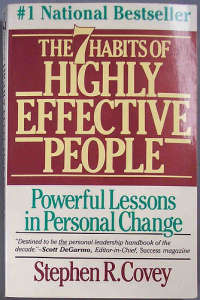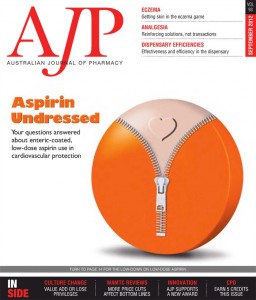See this article as it was originally published in the Australian Journal of Pharmacy here.
 Remember the cute little anecdote from the Stephen Covey classic, The 7 Habits of Highly Effective People? The one about the cadre of machete cutters cutting their way through the jungle. The cutters continuously figure out ways to cut more methodically, and in better teamwork unison so as to cut their way through the jungle more quickly. Suddenly, one of the cutters climbs one of the jungle trees to peer out to the horizon. “Hey guys, we are cutting in the wrong direction!” comes the exaltation from above. “Shut up” resounds the chorus from below, ”we are cutting more quickly and making faster progress!”
Remember the cute little anecdote from the Stephen Covey classic, The 7 Habits of Highly Effective People? The one about the cadre of machete cutters cutting their way through the jungle. The cutters continuously figure out ways to cut more methodically, and in better teamwork unison so as to cut their way through the jungle more quickly. Suddenly, one of the cutters climbs one of the jungle trees to peer out to the horizon. “Hey guys, we are cutting in the wrong direction!” comes the exaltation from above. “Shut up” resounds the chorus from below, ”we are cutting more quickly and making faster progress!”
Of recent times, I have found myself in situ to observe and study the workflows of numerous dispensaries and have pondered this Coveyism more than once.Positioned on “the other side” from me …..the pharmacist working in and making a living from the dispensary, what does dispensary effectiveness mean to them? What should it look like? What about efficiency………as is versus could be? How would their answers compare to those answers if we asked their waiting customers? Can dispensary effectiveness and efficiency, both from the pharmacist and the customer’s perspective, co-exist in mutual harmony? Have they ever deliberated these question and answers?
Surely by now you are asking yourself “how can any of this be applicable to me in the B2B arena?”
The normal advantage that the B2B Sales Exec has over the retail sales professional is that the B2B Sales Exec can target, ie can decide who to visit, when, why, and set the agenda to determine how to add value. The retail professional can’t………they are subject to whoever walks in the door, and the customer usually “sets the agenda” about why and when…..and what perceived value will look like. This case study shows how too often the retail sales professional (even in this more professional of retail environments), misses the opportunity…………..the opportunity of turning customer responsiveness into proactivity…………….and giving themselves the B2B Sales Exec type advantage. How can this be done?
Consider these lessons from a retail pharmacy setting versus B2B sales setting:
- The average duration of a script customer lifecycle we found to be 8 minutes and 33 seconds (customer presents at dispensary, drops in script, waits for processing, collects script, receives counsel, pays and leaves). How much time do you allocate for a planned, best practices, face to face visit with a customer
- At the dispensary 48% of the customers time is spent engaged with a staff member while the other 52% of the time they are disengaged, left on their own. Of your planned, best practices, visit time, how much is spent engaged with the customer versus time spent doing other things ie: disengaged from them?
- Take the time to add value for your customers with each visit. Take interest in them, their current issues and needs and try to add value over and above. For example: Pharmacists were observed on average to only add value 9% of the time they engaged with a customer, value neutral conversations contributed to 62% of engagement time, 25% of the time was spent on risk management and 3% on value destroying conversations. Of the time dedicated to engaging your customer, what proportion is value adding versus value neutral, risk management &/or value destroying?
- When observing script processing, on average staff spent 2min & 49sec actively working on the script. Another 3min & 4 sec saw the script just sitting idle on the bench. What about your customer orders? Order to delivery times and delay times- how would these measure up?
- What about the sales team itself – task allocation – can some of the work the Sales Exec (Expert B2B/pharmacist equivalent) is doing be assigned to someone else (Customer service / technician-assistant equivalent) leaving them more time in the field on value adding activity? Think about of the amount of time key ‘Sales Execs’ spend placing orders into the system, studying the stock counts, organising the production/orders for additional stock, answering calls which could easily be handles by others…..3/4 of the day is spent doing this rather than using ‘expertise’ out in the field with customers and prospects
So, what does all this mean? Is this how your customers feel about your visits/service? Would they make similarities between their sales visit from their B2B Sales Exec as they might when they visit their local retail pharmacy?
Our experience and findings over time mean that, most pharmacies tend to fall within the same ranges of results as the sites we visited, SO, when I walk into any store to have my regular script filled, I will experience a banal, forgettable experience I will feel like I have been processed, as much or even more than my script. At worst, I will feel frustrated and annoyed at being made to wait, when I don’t understand or feel the need to do so. Curiously, I may have done my shopping or picked up my dry cleaning in the middle of the visit, possibly because the pharmacist or their staff invited me to do so. And they appear to provide such “please go away” advice without an inkling of appreciation that I am thinking “gee these guys have no value to add to invite me to stay with them whilst my script is processed”.
Reality is that I am a regular Lipitor script customer. One day recently, I submitted my script for refilling at a different pharmacy to my regular. I was acting in a utilitarian way, because I wanted to go an Apple Retail outlet, and the closest one happened to be located in a major shopping centre. Kill two birds with one stone………….have my script filled and visit the Apple store in the same visit. My experience with the hitherto unknown pharmacy was in line with some of the reflections above. My experience at the Apple outlet was diametrically opposed. I was greeted at the door as I entered. I was genuinely and warmly asked how I could be assisted and if it was my first visit. Upon sharing the purpose of my visit with my “host” (I felt like an important guest!), he led me to the area of the store featuring the range of product of interest and introduced me to the product expert in that area. Because my host engaged me during the short walk, he was able to provide a succinct brief about my needs to the expert, so that I had to repeat nothing. After an exhilarating experience having my needs and questions met, in some cases being provided information and demonstration beyond expectation, my product expert host accompanied me to the payment desk near the store entrance and, again in an understated way, engaged me during the short walk. At payment, I was provided with further information and offers to enhance my experience, based on the interests I had shared at the outset. And a simple means for continuing on-going information flow with Apple at any time I choose to after the visit. How? Because this information was succinctly relayed from host to host, so that I had to repeat nothing. As I left the payment desk to pass through the front door again, I was thanked by the first host who greeted me on my way in….and was asked if I enjoyed my visit.
This story is a good news story. My observations provide me with the belief that community pharmacists have a wonderful opportunity to develop more “Apple-esque” pharmacies. Lessons to be learnt…..B2B?

